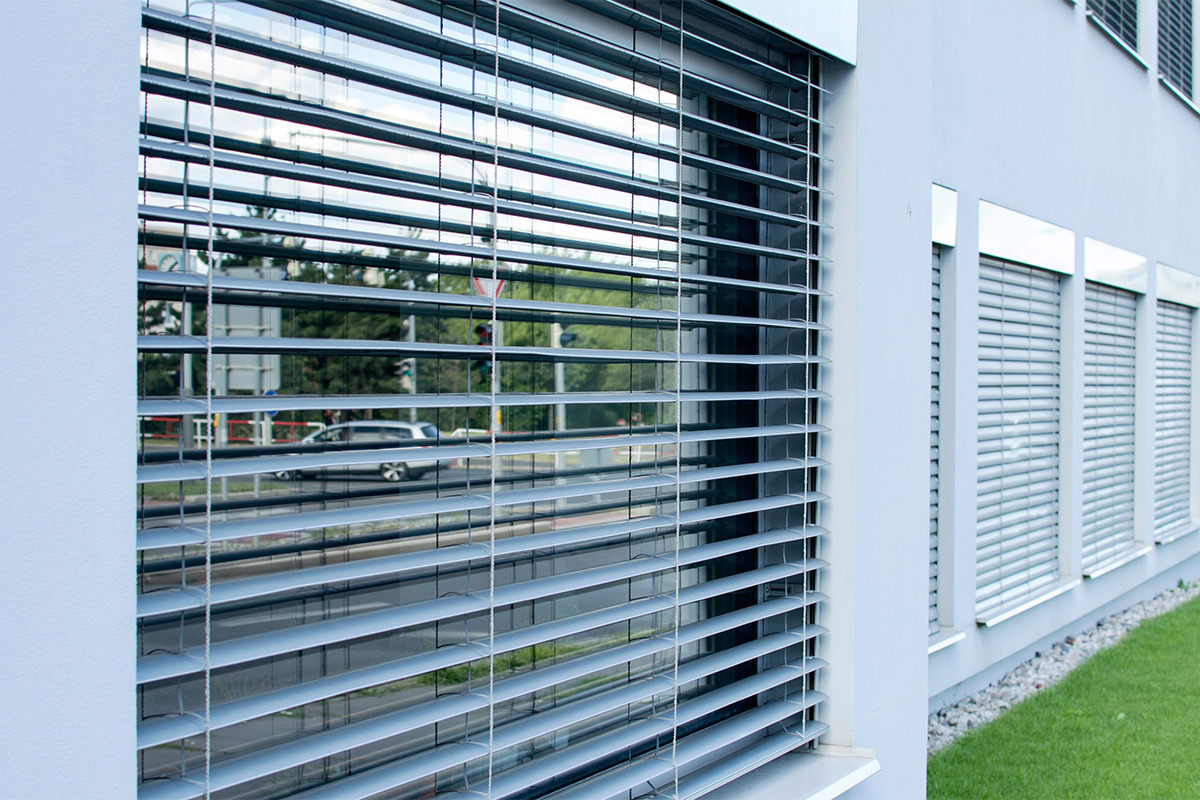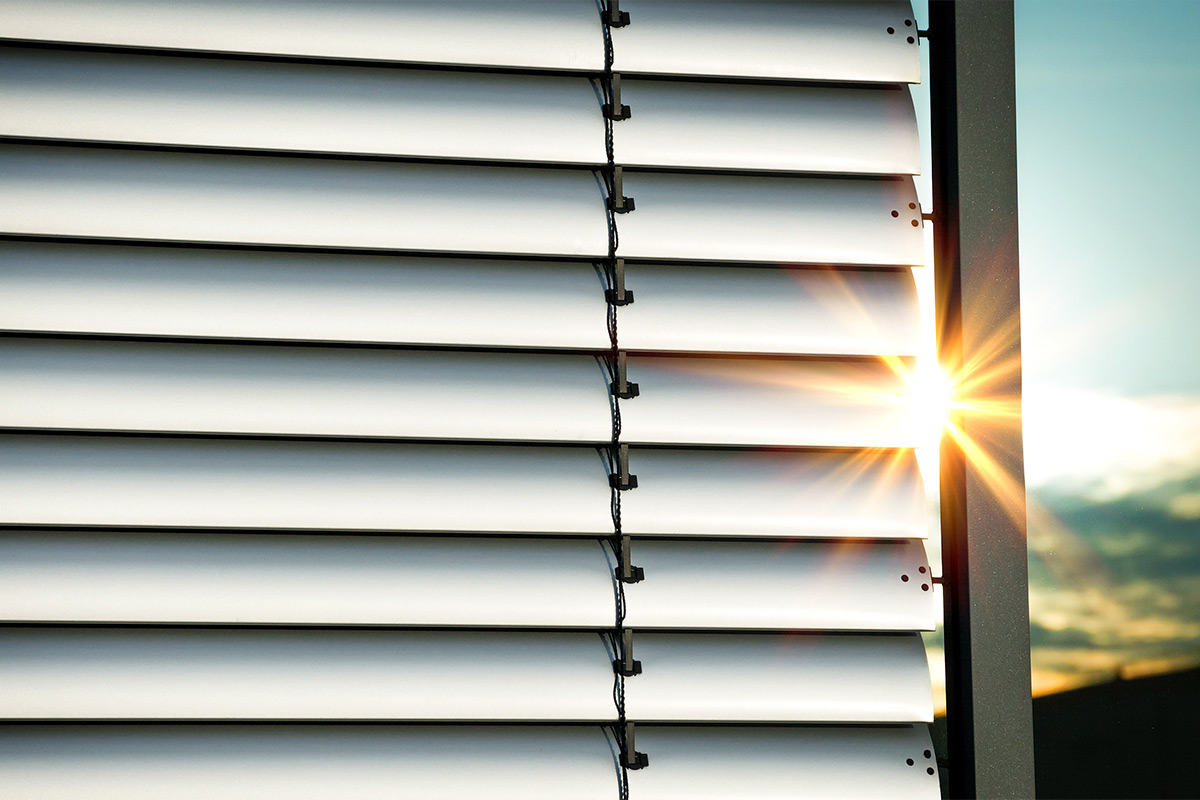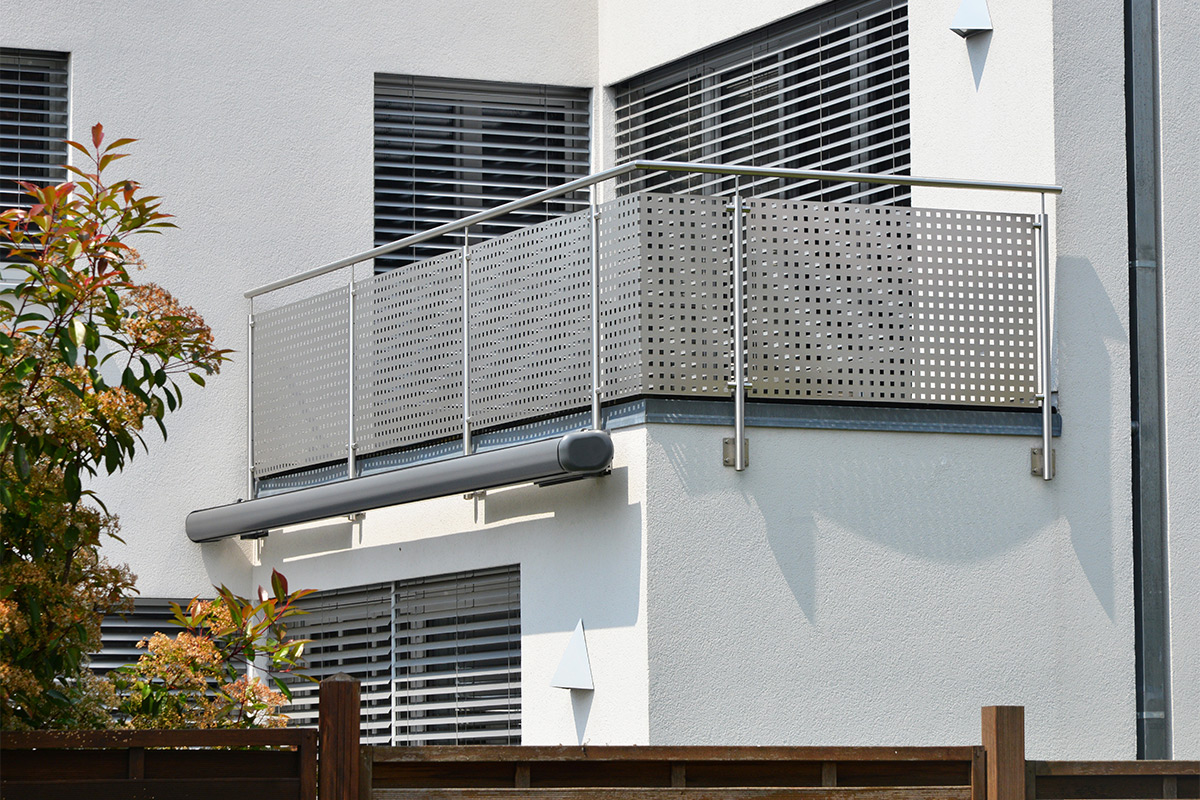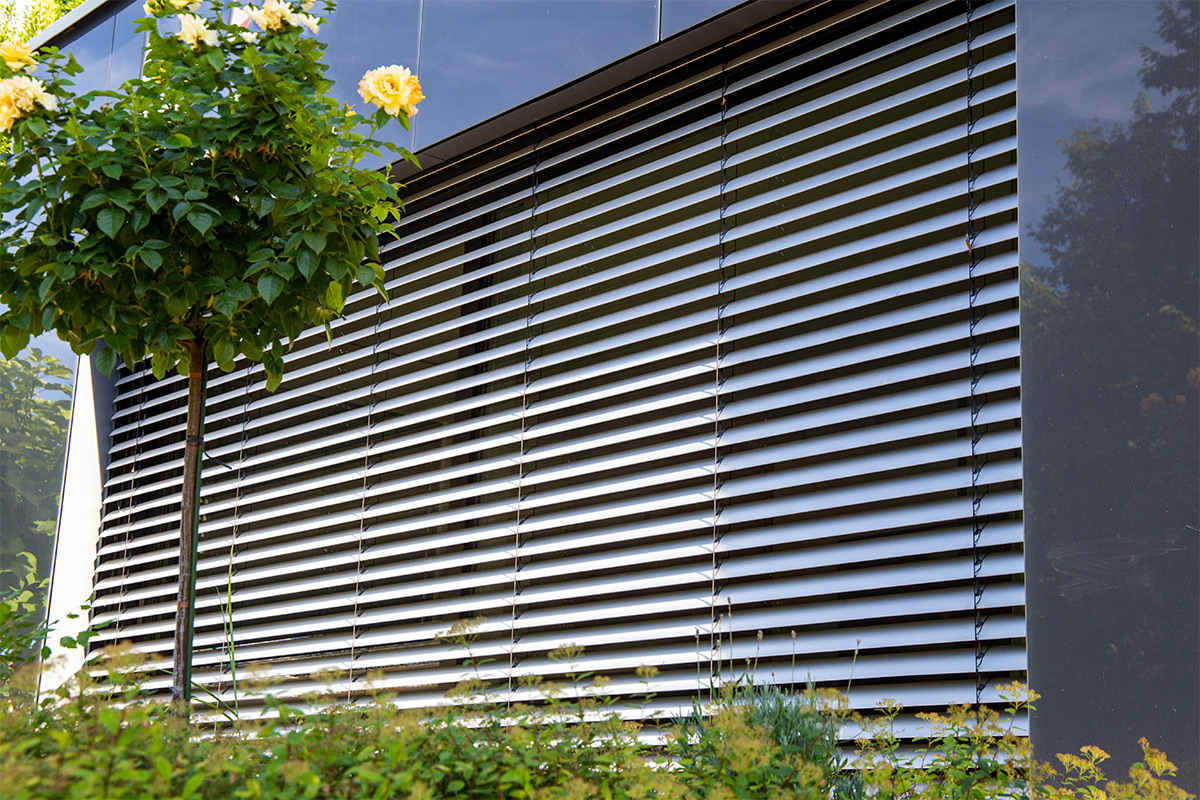12 September, 2023
VENETIAN BLINDS

Venetian façade blinds appear more and more often, especially on new buildings. We should not be surprised since they are a convenient and effective answer to several inconveniences. With their help, we eliminate excess light, block the influx of heat and protect ourselves from prying eyes. The revolution in Venetian blinds is driven in large part by modern control systems that can also work with shades and awnings, which are the subject of this text. Let's start from the beginning.
Venetian façade blinds are external window covers and have been known for centuries despite deriving their name from the mediaeval-born trade republic. Archaeologists trace their origins to ancient Persia and Egypt. In their modern form, however, they did not appear until the 1970s when innovators created the first products resembling the ones we use today.
Blinds consist of long slats connected by a string, ribbon, or chain, the so-called lamellas. They retract into a cassette placed over the window and customarily travel along guides located on the sides of the window.
Their distinguishing feature among window covers is that the lamellas can rotate, changing their angle against the window and, more importantly, to the sun's rays coming in at different angles depending on the time of day. When they are rotated by 90° and are in a plane parallel to the window surface, they look and act similar to a roller shutter mantle. When their rotation angle is close to 0°, making them perpendicular to the glass, they become almost invisible from the inside, although they continue to perform crucial functions.
The movement of the blinds relative to the surface of the window, i.e. their raising and lowering and the rotation of the lamellas – is the factor that determines their great usefulness. The way we control this system is precisely the control of the blinds. We will get to the details of façade blind control in a moment.
We should always opt for the installation of external blinds. Specialists recommend them to every investor based on the three main benefits of having them, that are:
If we desire enhanced dimming, Venetian blinds will work just as well as roller shutters. When we merely want to get rid of excess heat, there is a difference.
The difference between these window covers is that roller shutters create a uniform curtain, while blinds consist of separate components. When we lower the shutter, we block the view and keep the interior in darkness. When we pull the blinds down, we can leave their lamellas horizontal.
The sun shining on them will give off its heat, and diffused light will enter the interior. A precise control system for the blinds will allow us to direct brightness to a chosen spot, such as the ceiling, creating interesting visual effects.
Controlling the position of slats can also grant us privacy from people above or below us without limiting our field of vision.

Some traditional blinds and the occasionally encountered simple interior solutions can still use cord control. It is, of course, difficult to expect to control Venetian façade blinds in this way. They are far too large and heavy for that.
Currently, we have two different approaches for controlling blinds. They are:
Manual regulation of blinds, shades, and awnings relies on human muscle power. We turn a special crank, which, transferring forces to a dedicated control rod, sets the elements of the window covering in the way we want. The manual control system is a simple and inexpensive mechanism, but not everyone appreciates the inconvenience of its use.
The use of an electric drive is the most common by far nowadays. The motor sits in the box of façade blinds. Its work takes over the efforts of human muscles.
In the case of electric motors enclosed in the box, two general methods of controlling their operation appear, independent of the façade blind system we have chosen. These methods employ:
In practice, the choice of remote control for blinds is a little more complicated, but before we get to that, let's look at the installation.

Any investment in the house must be well thought out. When it comes to installing blinds, we must not act hastily. However, there is something that we may miss, even if we do not jump on impulses. These are issues related to the expansion of the window covering system.
Wired systems provide convenient control over blinds. If we have two blinds next to each other, it's easy to handle. However, if we, later on, want to enrich it with additional elements, such as more blinds, roller shutters, awnings, or garage doors we intend to control from one place, it may prove technically infeasible.
In such a situation, we can use a remote control for the blinds we install, but then we would have two different, incompatible control mechanisms. That's why it's worth installing manually operated blinds only when we are sure that we won't be adding any additional devices or when controlling them with wired systems, potentially from another location, is acceptable.

Manual control of Venetian blinds, including electric management with a wall-mounted remote control, is an increasingly rare and generally not recommended approach.
It does have its advantages. Using the Elero JA Soft motor as an example, we can say point to:
Reliability refers to the distance from which we can control blinds. The cable can be of virtually any length. Radio remote controls always have a limited range.
We must not assume a wire drive is inferior to its remotely-operated counterpart. The misunderstanding is quite common among laymen. Many advanced technologies that make life easier can appear in it, such as a silent brake.
For remotely controlled façade blinds, we can bet on solutions with one-way or two-way communication. In one-way controlled drives, the device gets a command and executes it, and that's it. In the XXIst century, however, such devices are turning into relics, which are hard to find on sale. Eko-Okna offers products such as Elero JA Comfort-868, which can send information back to the remote about the effects of its work. If something blocks the blind and it does not close, the device will inform us about it.

Remote control of Venetian blinds becomes even more convenient with automation, which can take various forms.
We can connect a simple automation controller to the electric drive of façade blinds, which will signal the window covering to change the position of the lamellas at certain times of the day. In the morning, thus equipped blinds will open moments before the alarm clock goes off. They will allow us to rest undisturbed until sunlight rouses us.
We can also fully automate the operation of Venetian blinds. For example, all products can work with autonomous wind sensors. Wind sensors, e.g. Somfy Eolis WireFree io, provide sufficient protection for blinds in case of strong gusts. Even the most universal façade drive can't detect the threat of strong winds on its own – it requires a sensor to send the appropriate signal.Devices like Elero Aero-868 AC work in a similar fashion. It is a weather sensor that, in addition to measuring wind strength, also monitors the level of sunlight. It can automatically close the blinds when there is too much sunlight and open them when there is a lack of it. This way, façade blinds provide comfort inside the building autonomously and intelligently.
Proper equipped Venetian blinds can be integrated into smart home systems, allowing for high-level autonomous control. Such an advanced level of automation enables us to manage everything conveniently through a computer or smartphone, as long as we have internet access. With just an internet connection, we can control and monitor our façade blinds remotely and enjoy the benefits of seamless integration with our smart home system.
The capabilities of advanced smart home systems extend beyond controlling blinds. They can also handle other compatible devices, such as INFINITI sectional garage door drives, lighting systems, and mechanisms integrated into property fences. These comprehensive systems allow for centralised control and management of various components within a home, providing convenience, security, and energy efficiency. Integrating these devices into an intelligent home ecosystem, we can manage multiple aspects of our home environment, enhancing comfort and convenience while optimising energy consumption.
The abundance of possibilities highlights the importance of thoroughly discussing available solutions with a distributor, and the distributor should consult their representative from Eko-Okna. Even if an investor does not currently require advanced technologies, considering a perspective of 5-10-15 years that is relatively short in the case of real estate, the development of smart technologies will undoubtedly accelerate. The rapid growth of intelligent devices is inevitable. What may be considered novelty or extravagance today will become the standard sooner than we believe. Being prepared for this progression today will lead to significant cost savings in the future and create better living conditions for us and our families.

Hotline:
+1 917 810 8657 +48 572 337 243 Connection fee in accordance with the operator`s price list.
Eko-Okna S.A.
Kornice, ul. Spacerowa 4
47-480 Pietrowice Wielkie
NIP: 6391813241, KRS: 0000586067